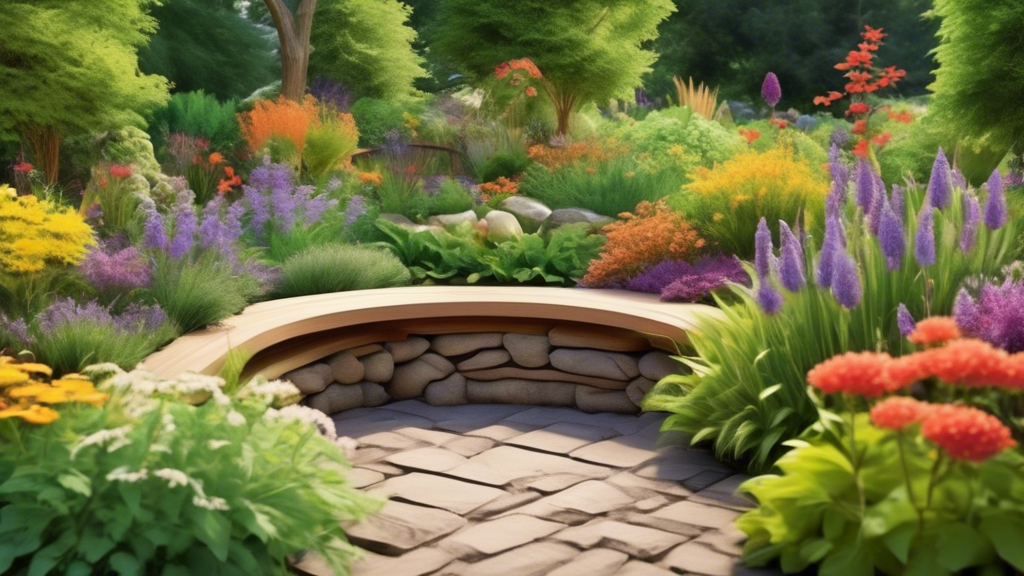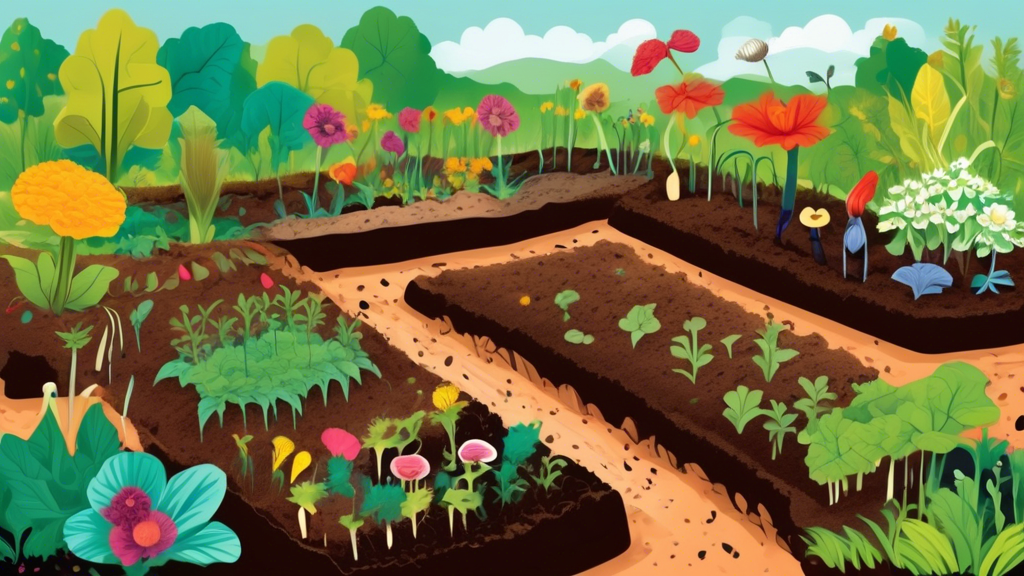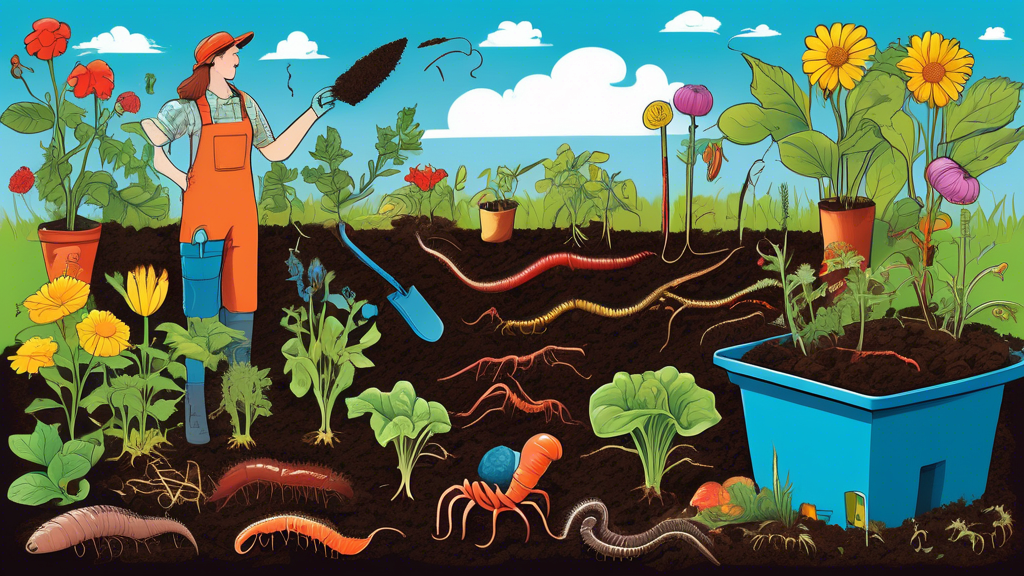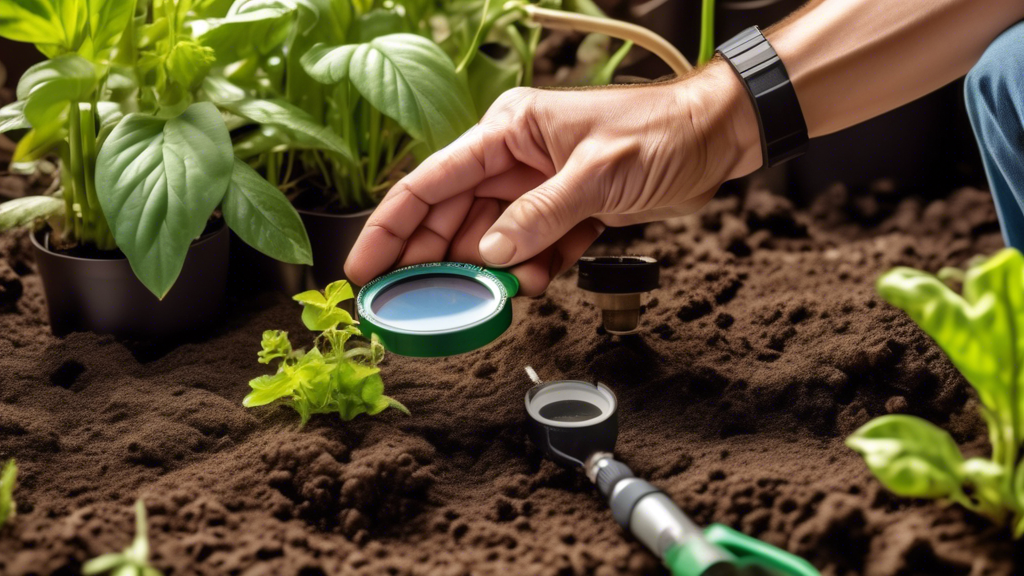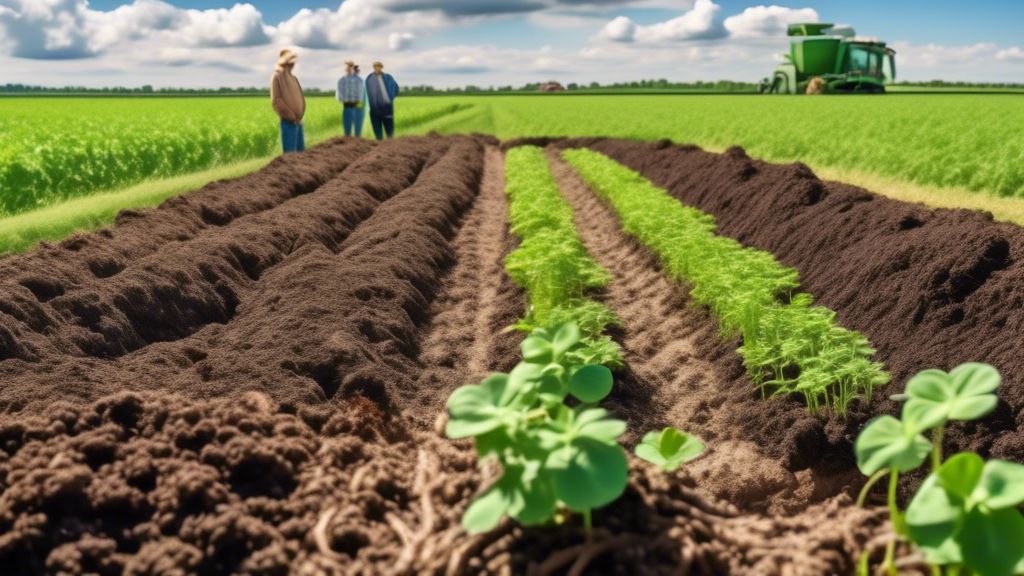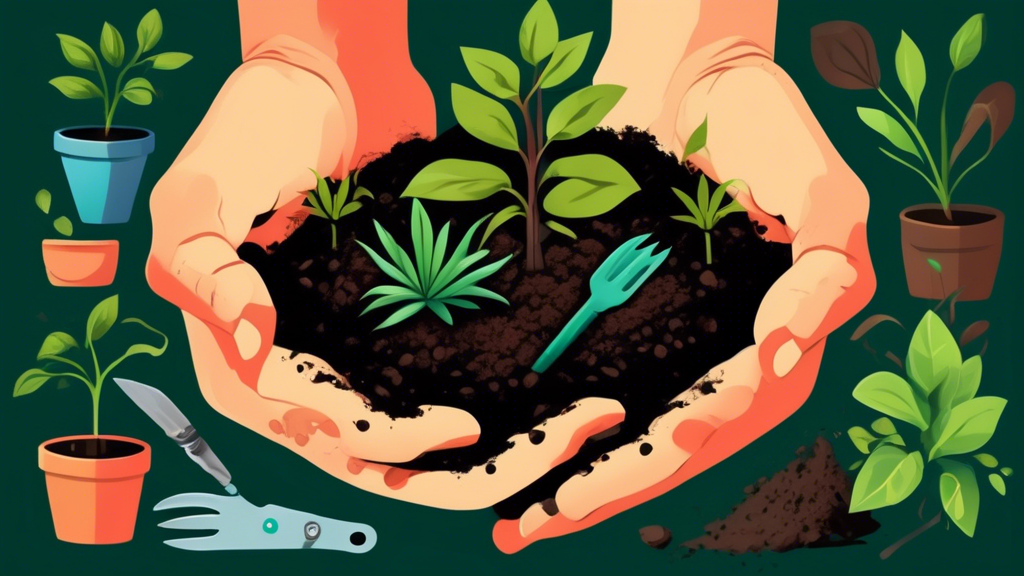
Why Your Soil is the Heart of Your Organic Garden
The Living Ecosystem Beneath Your Feet
Healthy soil is far more than just “dirt”; it’s a vibrant, living ecosystem. Think of it as a bustling underground city where billions of bacteria, fungi, protozoa, and earthworms work together. These microorganisms are the unsung heroes of your garden, breaking down organic matter into rich humus and making nutrients available to your plants’ roots.
Common Challenges Caused by Poor Soil
Unhealthy soil leads to a cascade of problems in the garden. You might notice weak, stunted plants that struggle to grow, even with ample water and sun. Poor drainage and waterlogging are common, often due to compaction. This stressed environment makes plants highly susceptible to pest invasions and diseases, creating a cycle where you’re constantly fighting symptoms instead of building resilience.
The Foundation: Understanding Your Soil’s Starting Point
The Simple Jar Test: Discover Your Soil Type
Before you amend your soil, you need to know what you’re working with. The jar test is a simple, effective way to determine your soil’s composition. Fill a clear jar one-third with soil, add water until it’s almost full, shake vigorously, and let it settle for 24 hours. The layers will reveal the proportions of sand, silt, and clay, telling you if your soil is well-draining, moisture-retentive, or heavy and compacted.
To Test or Not to Test? A Look at Soil pH and Nutrients
Understanding your soil’s pH and nutrient levels is crucial, as pH controls nutrient availability. You have two main options for testing:
| Method | Pros | Cons |
|---|---|---|
| DIY Test Kits | Fast, inexpensive, convenient for home use. | Less accurate, provides limited data on specific nutrients. |
| Professional Lab Tests | Highly accurate, provides detailed nutrient analysis and tailored recommendations. | Higher cost, longer wait for results. |
Your Action Plan for Creating Healthy Soil
Feed the Soil, Not Just the Plants: The Power of Organic Matter
The single most important rule in organic gardening is to feed the soil ecosystem, which in turn feeds your plants. Adding organic matter is the key. It improves soil structure, enhances water retention and drainage, and boosts fertility. Aim for a mix of “browns” (carbon-rich materials like dried leaves, straw, cardboard) and “greens” (nitrogen-rich materials like grass clippings, vegetable scraps, coffee grounds).
The Gold Standard: How to Start a Compost Pile
Composting is nature’s way of recycling. To start a simple pile, layer your browns and greens in a bin or a heap, keep it as moist as a wrung-out sponge, and turn it occasionally to introduce air. The microbes will do the rest, transforming your waste into “black gold.”
Unique Insight: For a truly low-effort approach, try “trench composting.” Simply dig a trench about a foot deep in your garden bed, bury your kitchen scraps directly, and cover them with soil. The scraps will decompose in place, enriching the soil right at the root level and attracting earthworms to till the soil for you.
The Magic of Cover Crops (Green Manure)
Don’t let your garden beds sit bare over the off-season. Planting cover crops like clover, winter rye, or vetch is a powerful technique. These plants prevent soil erosion, suppress weeds, and their roots break up compacted soil. When you turn them into the soil before they go to seed, they decompose and provide a massive infusion of organic matter and nitrogen.
The No-Till Method: A Gentler Approach to Soil Health
The debate between tilling and no-till gardening is central to soil health. Here’s a comparison:
| Method | Advantages | Disadvantages |
|---|---|---|
| Traditional Tilling | Quickly incorporates amendments, aerates compacted soil. | Disrupts soil life, destroys beneficial fungal networks (mycorrhizae), and speeds up the decomposition of organic matter. |
| No-Till Gardening | Preserves soil structure and microbiome, builds long-term fertility, improves water infiltration. | Slower to show initial results, requires more mulch to suppress weeds. |
Unique Insight: Tilling is like hitting the “reset” button on your soil’s complex ecosystem. In contrast, no-till gardening allows a sophisticated, resilient food web—similar to the interdependent life found on a mature forest floor—to develop and thrive, creating a self-sustaining environment.
Maintaining Your Soil’s Health Season After Season
The Art of Mulching: Your Soil’s Best Friend
A layer of organic mulch (such as straw, wood chips, or shredded leaves) is essential for maintaining soil health. It conserves water by reducing evaporation, suppresses weeds by blocking light, moderates soil temperature, and slowly breaks down to feed the soil biology.
Understanding Organic Fertilizers: A Quick Guide
While a healthy soil rich in compost may need little supplemental feeding, organic fertilizers can address specific nutrient needs. They feed the soil life, which then feeds your plants. Here are a few common types:
- Alfalfa Meal: A balanced, gentle fertilizer that also contains a natural growth stimulant.
- Kelp/Seaweed Meal: Packed with micronutrients and natural plant growth hormones.
- Rock Phosphate: A slow-release source of phosphorus for root and flower development.
Frequently Asked Questions (FAQs) About Healthy Organic Soil
How long does it take to transform bad soil into healthy soil?
You can see noticeable improvements in a single growing season, but building truly vibrant, self-sustaining soil is a 3-5 year journey. The key is consistent annual additions of organic matter through compost, mulch, and cover crops.
Can I use manure from my local farm in my garden?
Yes, manure is an excellent soil amendment, but it must be well-aged or composted for at least 6 months. Fresh manure is too high in ammonia and can “burn” plant roots, and it may contain pathogens that can contaminate your garden.
Are coffee grounds good for my garden soil?
Absolutely! Used coffee grounds are a fantastic “green” material for your compost pile. They can also be sprinkled lightly around plants as a top dressing. They are slightly acidic, which benefits acid-loving plants, and they are a great food source for earthworms.
I have heavy clay soil. Is it a lost cause?
Not at all! Clay soil is notoriously difficult to work with but is often very fertile. The solution is not to fight it but to improve its structure by aggressively adding organic matter. Over time, compost and other amendments will bind with the clay particles, creating aggregates that dramatically improve drainage and aeration.

